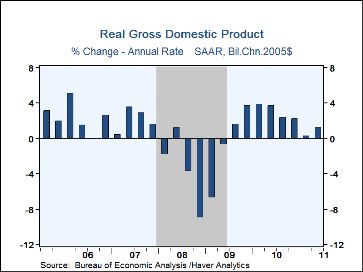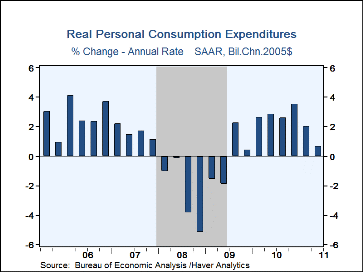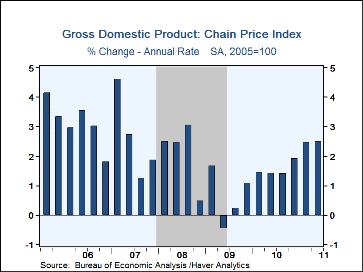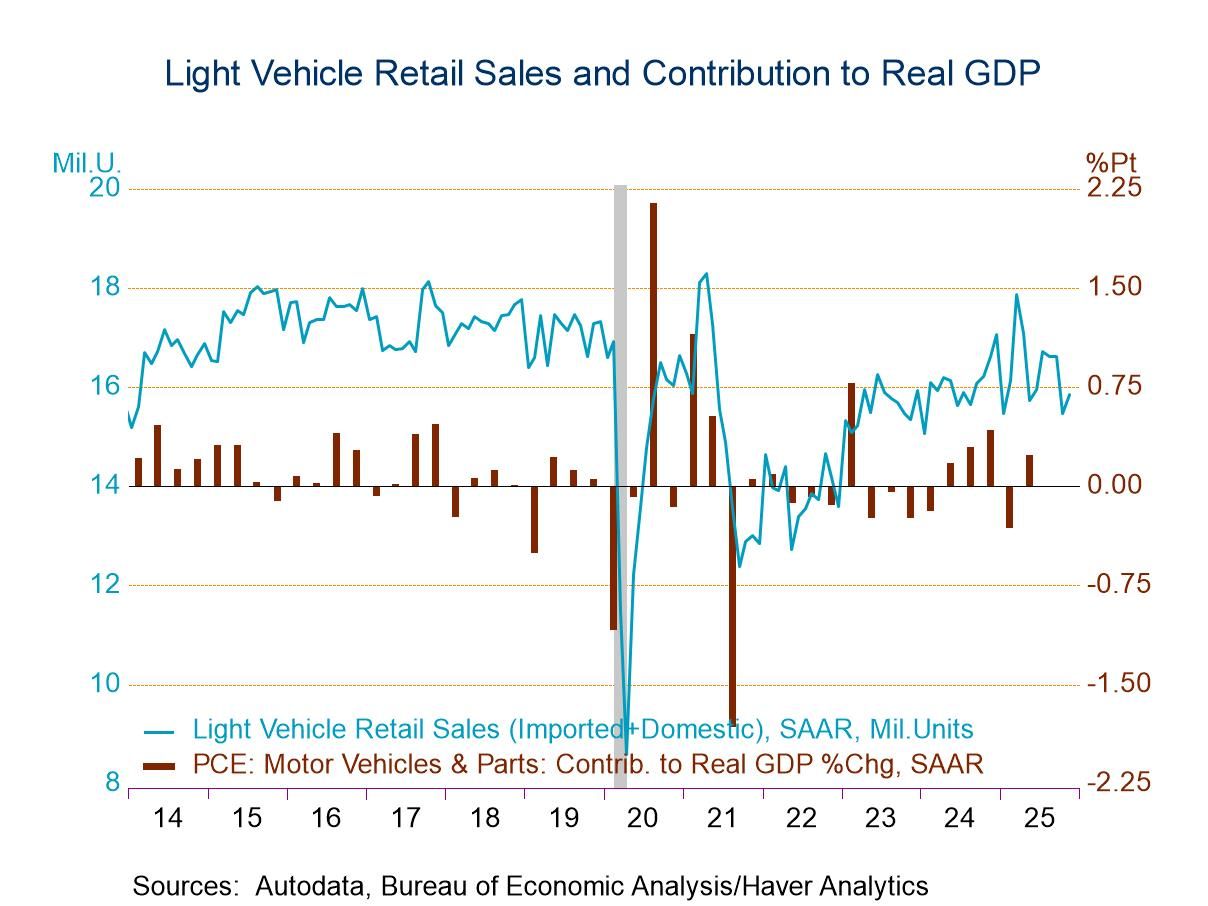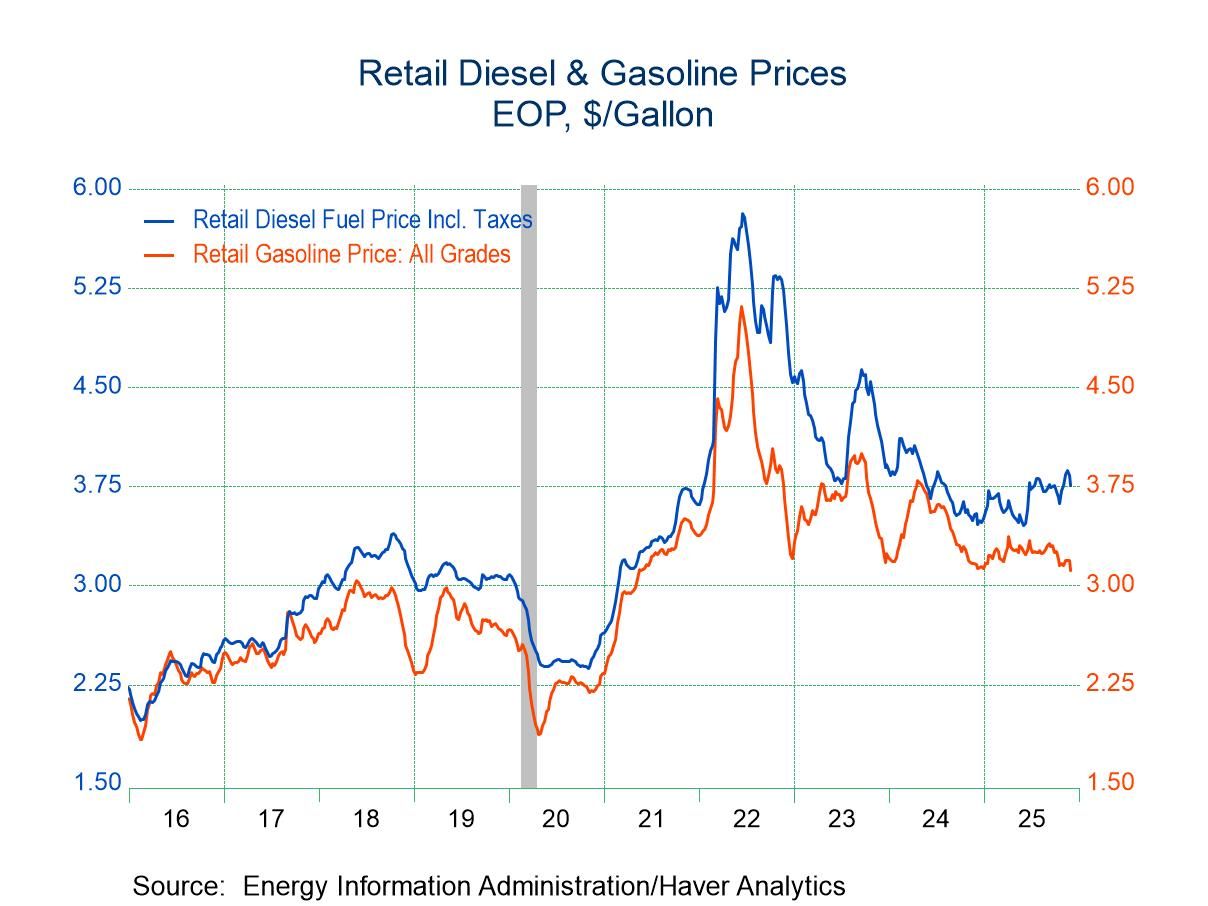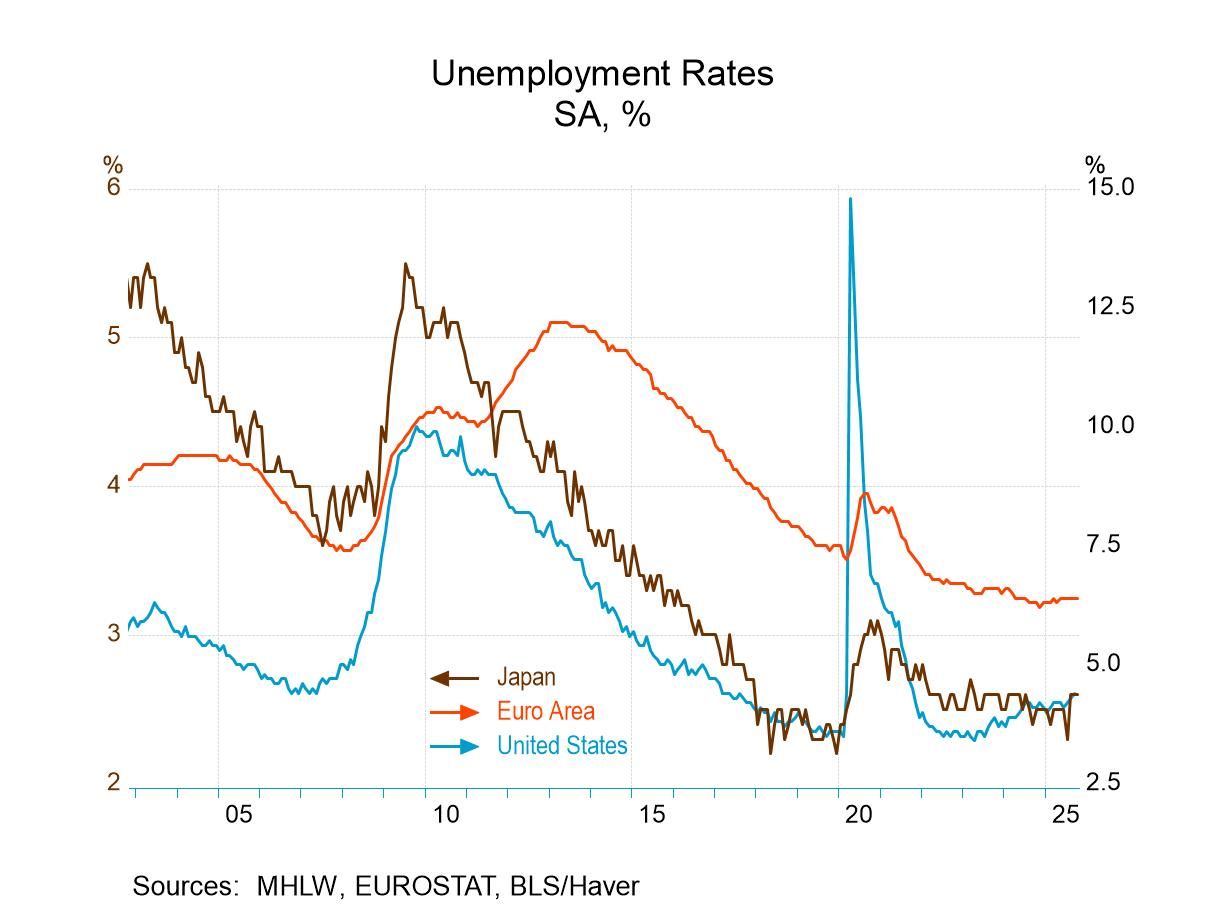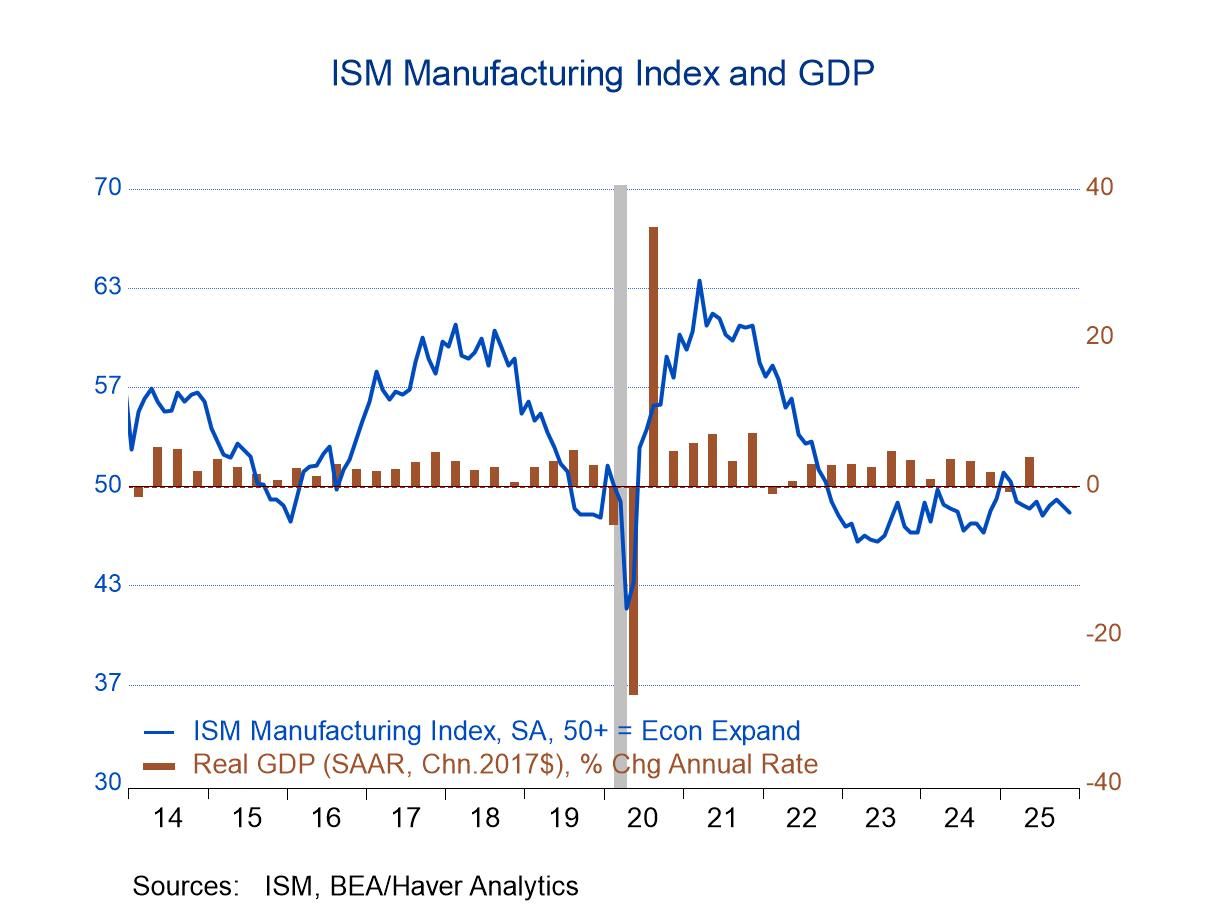 Global| Sep 29 2011
Global| Sep 29 2011U.S. GDP Growth Revised Back Up
by:Tom Moeller
|in:Economy in Brief
Summary
Real GDP growth was revised back up to 1.3% (SAAR) from the 1.0% reported a month ago. The change was powered by a higher estimate of growth in domestic final sales. Consensus estimates had called for GDP growth of 1.2%. The upward [...]
Real GDP growth was revised back up to 1.3% (SAAR) from the 1.0% reported a month ago. The change was powered by a higher estimate of growth in domestic final sales. Consensus estimates had called for GDP growth of 1.2%. The upward revision stemmed mostly from domestic final demand growth to 1.3% from 1.1%. If these numbers seem small, that's because they are. Overall GDP growth has decelerated by roughly one half versus last year, mostly because the rate of inventory accumulation fell and domestic final sales growth remained modest.
Domestic final sales growth was ticked up to 1.3% for Q2 from 1.0% and still was powered by capital investment growth of 10.3%, revised from 9.9%. Yesterday's figures showing strength in orders & shipments of nondefense capital goods bodes well for Q3 growth. Residential investment also was on the mend last quarter and growth was raised to 4.2% from 3.4%. However, that number may turn negative in Q3 based on the monthly readings for housing starts and construction spending already in hand. Personal spending growth was ticked up to a negligible 0.7% for Q2 from 0.4%. The monthly retail and vehicle sales figures suggest nothing better this quarter.
The influences on GDP growth from inventories and foreign trade remained slight for Q2. Inventories may remain that way this quarter but trade showed great improvement during July.
Price inflation was little changed as the chain price index moved to an increase of 2.5%. However, the rates of growth so far this year are double those in 2010.
Profits before taxes without IVA and CCAdj increased a little-changed 0.7% from Q1 and just 1.3% from a year ago. Total economic profits, though, including the inventory valuation adjustment and capital consumption adjustments, gained 3.3% for Q2, the best quarter-to-quarter performance in a year. Growth in nonfinancial industry profits were up 8.1% for the quarter (13.9% y/y). Rest-of-world profits grew 8.4% in Q2 (14.0% y/y) but financial industry profits fell 11.5% (-7.4% y/y).
The latest GDP figures can be found in Haver's USECON and USNA databases; USNA contains basically all of the Bureau of Economic Analysis' detail on the national accounts, including the new integrated economics accounts and the recently added GDP data for U.S. Territories. The Consensus estimates can be found in AS1REPNA.
| Chained 2005 $, % AR | Q2'11 (Final) | Q2'11 (Prelim.) |
Q2'11 (Adv) |
Q1'11 | Q4'10 | Q2'11 Y/Y |
2010 | 2009 | 2008 |
|---|---|---|---|---|---|---|---|---|---|
| Gross Domestic Product | 1.3 | 1.0 | 1.3 | 0.4 | 2.3 | 1.6 | 3.0 | -3.5 | -0.3 |
| Inventory Effect | -0.3 | -0.2 | 0.2 | 0.3 | -1.8 | -0.3 | 1.6 | -0.8 | -0.5 |
| Final Sales | 1.6 | 1.2 | 1.1 | 0.0 | 4.2 | 1.9 | 1.4 | -2.6 | 0.2 |
| Foreign Trade Effect | 0.2 | 0.1 | 0.6 | -0.3 | 1.4 | 0.2 | -0.4 | 1.0 | 1.2 |
| Domestic Final Sales | 1.3 | 1.1 | 0.5 | 0.4 | 2.7 | 1.7 | 1.8 | -3.6 | -1.0 |
| Demand Components | |||||||||
| Personal Consumption | 0.7 | 0.4 | 0.1 | 2.1 | 3.6 | 2.2 | 2.0 | -1.9 | -0.6 |
| Business Fixed Investment | 10.3 | 9.9 | 6.3 | 2.1 | 8.0 | 7.9 | 4.4 | -17.9 | -0.8 |
| Residential Investment | 4.2 | 3.4 | 3.8 | -2.4 | 2.5 | -6.8 | -4.3 | -22.2 | -23.9 |
| Government Spending | -0.9 | -0.9 | -1.1 | -5.9 | -2.2 | -2.2 | 0.7 | 1.7 | 2.6 |
| Chain-Type Price Index | |||||||||
| GDP | 2.5 | 2.4 | 2.3 | 2.5 | 1.9 | 2.1 | 1.2 | 1.1 | 2.2 |
| Final Sales of Domestic Product | 2.5 | 2.4 | 2.3 | 2.4 | 1.8 | 2.0 | 1.2 | 1.0 | 2.2 |
| Final Sales to Domestic Purchasers | 3.4 | 3.3 | 3.2 | 3.9 | 2.0 | 2.6 | 1.5 | -0.1 | 3.3 |
Tom Moeller
AuthorMore in Author Profile »Prior to joining Haver Analytics in 2000, Mr. Moeller worked as the Economist at Chancellor Capital Management from 1985 to 1999. There, he developed comprehensive economic forecasts and interpreted economic data for equity and fixed income portfolio managers. Also at Chancellor, Mr. Moeller worked as an equity analyst and was responsible for researching and rating companies in the economically sensitive automobile and housing industries for investment in Chancellor’s equity portfolio. Prior to joining Chancellor, Mr. Moeller was an Economist at Citibank from 1979 to 1984. He also analyzed pricing behavior in the metals industry for the Council on Wage and Price Stability in Washington, D.C. In 1999, Mr. Moeller received the award for most accurate forecast from the Forecasters' Club of New York. From 1990 to 1992 he was President of the New York Association for Business Economists. Mr. Moeller earned an M.B.A. in Finance from Fordham University, where he graduated in 1987. He holds a Bachelor of Arts in Economics from George Washington University.


